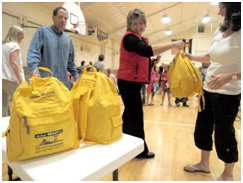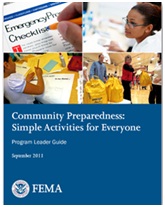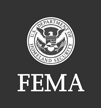Neighbors Helping Neighbors Through Preparedness
 Comprehensive preparedness requires the whole community to participate and FEMA places tremendous value on communities that embrace a local "Neighbors Helping Neighbors" approach. Neighbors Helping Neighbors empowers community leaders to involve and educate individuals from their community about simple steps one can take to become more prepared. Forty-six percent of individuals expect to rely a great deal on people in their neighborhood for assistance within the first 72 hours after a disaster. When the whole community comes together to respond to and help recover from these emergencies - neighbor helping neighbor - we can often meet the needs of everyone.
Comprehensive preparedness requires the whole community to participate and FEMA places tremendous value on communities that embrace a local "Neighbors Helping Neighbors" approach. Neighbors Helping Neighbors empowers community leaders to involve and educate individuals from their community about simple steps one can take to become more prepared. Forty-six percent of individuals expect to rely a great deal on people in their neighborhood for assistance within the first 72 hours after a disaster. When the whole community comes together to respond to and help recover from these emergencies - neighbor helping neighbor - we can often meet the needs of everyone.
The Neighbor Helping Neighbor approach seeks to support state, tribal and local agencies, civic organizations, faith-based groups and other community organizations that serve the whole community. FEMA works to provide these organizations with additional tools and preparedness training opportunities so they can become more prepared. This includes Independent Study 909 - Community Preparedness: Implementing Simple Activities for Everyone and the Community Preparedness Toolkit.
If you know of a great preparedness tool, please email it to citizencorps@dhs.gov with "Neighbors Helping Neighbors tool" in the subject line.
Community Preparedness: Implementing Simple Activities for Everyone
 FEMA’s IS-909 course and Preparedness Activities for Communities Everywhere tools support communities already engaged or interested becoming more prepared. To support new and existing neighborhood preparedness programs, Preparedness Activities for Communities Everywhere tools are comprised of 16 preparedness modules on topics ranging from preparedness on a budget (6-page PDF) to fire extinguisher operation (8-page PDF) and specific topics such as disaster planning for a pet or service animal. Attending preparedness training is a step individuals can take to become better informed. As community leaders, the tools are designed for anyone to use in coordination with your local emergency preparedness partners to help better prepare those you serve for emergencies. The tools include:
FEMA’s IS-909 course and Preparedness Activities for Communities Everywhere tools support communities already engaged or interested becoming more prepared. To support new and existing neighborhood preparedness programs, Preparedness Activities for Communities Everywhere tools are comprised of 16 preparedness modules on topics ranging from preparedness on a budget (6-page PDF) to fire extinguisher operation (8-page PDF) and specific topics such as disaster planning for a pet or service animal. Attending preparedness training is a step individuals can take to become better informed. As community leaders, the tools are designed for anyone to use in coordination with your local emergency preparedness partners to help better prepare those you serve for emergencies. The tools include:
- A comprehensive Program Leaders guide (13-page PDF) and Independent Study Course for those just starting a neighborhood preparedness effort. The Program Leaders guide strongly encourages coordination, collaboration and communication with local government and existing preparedness programs before starting a new effort.
- A facilitator guide (127-page PDF) to assist the person who will lead the training, related presentation materials, and handouts for participants to use and keep.
- Sixteen preparedness modules can be used standalone for training sessions as short as 15 minutes, or combined to create a comprehensive community training effort up to 2 hours at a time.
- Preparedness Activities for Communities Everywhere modules are available in English (127-page PDF) and Spanish (127-page PDF).



